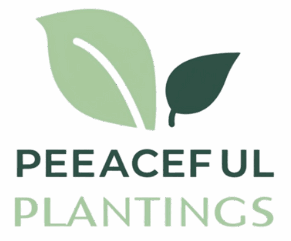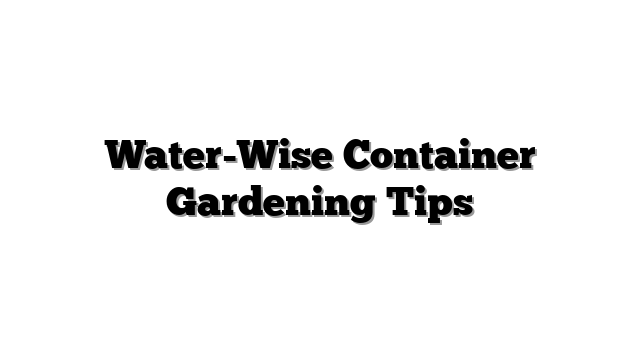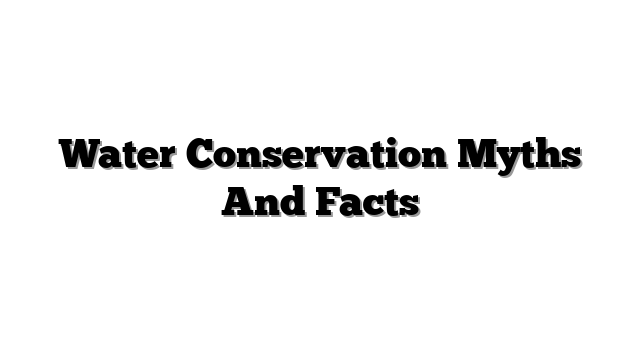Using Native Plants To Reduce Water Needs
Watering gardens takes time. It costs money. Dry weather makes it harder. You want a beautiful garden. You want one that needs less water. This is possible. Native plants offer a solution. They grow well in local places. They need less help from you. They use less water.
This guide helps you learn. We show you how to use native plants. You save water. Your garden looks good. We cover everything. We help you choose plants. We show you how to plant them. We discuss design ideas. We explain easy care. Learn about Using Native Plants to Reduce Water Needs. It’s a smart step. It helps your garden. It helps the planet. Think about gardening for beginners. This is a good way to start. It improves plant health. It helps water conservation.
Why Go Native? More Than Just Saving Water
Many reasons exist to use native plants. They offer huge benefits. They make your garden better. They help nature too.
Natural Adaptation Means Less Water
Native plants grew here for ages. They know the local weather. They know the soil. They learned to live with little rain. They are built for it. Their roots grow deep. They find water below ground. This gives them drought resistance. They fit the climate zones. They like the local soil type. They do not need extra water. Not like plants from other places.
Supporting Local Ecosystems
Native plants help local wildlife. Bees love native flowers. Butterflies need native leaves. Birds eat native seeds. They find food and shelter. Your garden becomes a home. It helps pollinators. It helps many creatures. This creates ecological benefits. It makes nature stronger.
A recent study showed this. Gardens with native plants bring more bees. They bring more kinds of bees. This helps food grow.
Reduced Maintenance (Beyond Watering)
Native plants are tough. Local bugs do not bother them much. Local sicknesses do not hurt them often. This means you spray less. You use fewer chemicals. This supports Organic gardening. You do not need to prune much. You do not need to cut off old flowers often. They are Low-maintenance plants. You work less. Your garden still looks great.
Long-Term Cost Savings
Water costs money. Using less water saves money. Native plants need less water. Your water bill goes down. You buy less fertilizer. You buy fewer bug sprays. You replace fewer dead plants. You save money over time. This is smart. It’s good for your wallet.
Latest statistics show water costs rising. Saving water at home matters. It helps your budget.
A Sense of Place
Native plants belong here. They give your garden a special look. It feels like your local area. It connects to the land. It is beautiful. It feels right.
Experts agree on native plants. Dr. Tallamy studies insects. He says native plants are key. They feed the bugs that feed the birds. It is a food chain.
Research local groups. Find native plant societies. They share local facts. They help you learn more. Learn about your region’s plants.
Choosing the Right Native Plants for Your Specific Site
Pick the correct plants. This helps them grow well. They will need less care. They will use less water.
Know Your Zone: Understanding Climate
Know your plant hardiness zone. This tells you about winter cold. It is a starting point. Also look at your small area. Your yard has microclimates. One spot gets full sun. Another stays shady. One area is wet. Another is dry. These are small climate zones.
Site Assessment: Sun, Soil, and Slope
Look closely at your yard. How much sun does it get? Morning sun? Afternoon sun? Full day sun? Part day sun? Dig in your dirt. What is your soil type? Is it sandy? Is it clay? Does water drain well? Check Soil health. Does water sit there? Does it run off fast? Look at slopes. Water runs down hills. Flat areas hold water. Consider this when picking plants.
Do a simple soil test. Dig a hole. Make it a foot deep. Fill it with water. Let it drain. Fill it again. How long does it take? Fast draining soil needs plants for dry spots. Slow draining soil needs plants for wet spots.
Researching Local Natives
Find plants native to your area. Not just your state. Your specific region. Where do you find this? Your local government office helps. Plant nurseries specializing in natives are great. Look online for local plant lists. Botanical gardens near you have native sections. Ask them questions. Find Local native plants. They are best.
Matching Plants to Conditions (and Purpose)
Match the plant to the spot. Sunny spots need sun-loving natives. Dry spots need Drought-tolerant landscaping. Wet spots need plants that like water. This is Water-wise gardening. Group plants by their needs.
Think about what you want. Want flowers? Choose flowering natives for garden beds. Need to cover ground? Pick native Ground cover. Want privacy? Plant native shrubs. Plan for different needs.
Avoiding Invasive Look-Alikes
Some plants look native. They are not. Some are invasive. They spread too much. They hurt native plants. They hurt wildlife. Learn Plant identification. Be sure you buy true natives. Ask the nursery staff.
Look for specific plant names. Use the scientific name. This helps you be sure.
Preparing Your Landscape for Native Planting Success
Get your garden ready. Good steps now mean less work later. The plants will do better.
Starting Fresh: Clearing the Area
Remove old grass. Get rid of weeds. You can dig them out. This takes effort. You can cover the area. Use cardboard and mulch. This is sheet mulching. It smothers weeds. It helps the soil. This is part of Organic gardening. Choose a method that works for you.
Soil Preparation – Less is Often More
Native plants like their own soil type. Often, it is not perfect dirt. Do not add too much stuff. Do not add lots of compost everywhere. Too much good stuff makes natives soft. They need to be tough. They need to grow deep roots.
Improve drainage if soil holds water. Add some grit or compost then. Mix it in a little. Focus on Soil health. Healthy soil drains okay. It has good tiny parts.
The Critical Role of Mulch
Mulch is very important. It saves water. It stops weeds from growing. It keeps soil cool in summer. It keeps it warm in winter. Use wood chips. Use shredded bark. These are organic mulches. They break down slowly. They feed the soil later.
Put mulch down thick. Two to three inches is good. Keep mulch away from plant stems. Leave a little space. This stops rot. Mulch helps Water conservation a lot. It is a simple step.
Laying Out Your Design
Plan where plants go. Put plants on the ground first. Leave them in their pots. Move them around. Think about size later. How big will they get? Give them space. This is Garden planning. Group plants needing similar conditions. This is hydrozoning. Even natives have slight differences. Some like it a little drier. Some like it a little wetter.
This planning helps with Xeriscaping for home gardens. You put the right plant in the right place.
Initial Watering Strategy
Native plants save water later. They need water at first. They need water to grow roots. Water them regularly the first year. Especially in dry times. This helps them get strong. Use good Irrigation methods. Water the roots. Water deeply. This is part of good Planting techniques. After the first year, you water much less. This is the goal.
Sheet mulching steps: Cut grass low. Lay cardboard down. Overlap edges well. Wet the cardboard. Add a thick layer of mulch. Plant through holes in cardboard.
Apply mulch right: Clear weeds first. Spread mulch evenly. Keep it 2-3 inches deep. Leave space around plant bases.
Designing a Beautiful, Water-Saving Native Garden
Make your garden look good. Make it save water too. Design helps a lot.
Principles of Water-Wise Design
Group plants by water needs. This is hydrozoning. Put plants needing more water together. Put plants needing less water together. Even with natives, some spots are drier. Some spots are wetter. Put the right native in the right spot.
Capture water where it falls. Do not let it run away. Direct rain into garden beds. This helps Water conservation.
Integrating Hardscaping and Permeable Surfaces
Think about paths and patios. Use materials water can go through. Gravel paths let water soak in. Special pavers let water through. This is better than solid concrete. Solid surfaces make water run off. Direct runoff into garden areas. This waters plants naturally.
Design your space well. This is Landscape design. It helps manage water.
Incorporating Water-Saving Features (2025 Trend)
Rain gardens are popular. They catch rainwater runoff. Water goes into a shallow dip. Plants that like wet feet grow there. The water soaks into the ground slowly. This is Rainwater harvesting. It helps manage storm water. It helps the ground water.
Smart irrigation systems exist. They use weather data. They water only when needed. They are good for new plants. They help them get started. The goal is to turn them off later. Established natives do not need them.
One trend for 2025 is smaller rain gardens. People put them in their yards. They are easy to make.
Designing for Beauty and Function
Use different plant sizes. Use short Ground cover. Add medium shrubs. Plant taller trees. This makes layers. Layers look nice. They offer homes for wildlife. Mix textures. Mix colors. Plan for flowers at different times. Have something interesting all year. Use natives in your style. They fit many looks.
Make your garden beds look full. Use different plant shapes. This looks natural.
Creating Wildlife Habitat
Plan for birds and bugs. Plant flowers they like. Make sure flowers bloom all season. Early spring to late fall. This feeds Pollinators. Add places for shelter. Dense shrubs offer cover. A rock pile helps lizards. Your garden becomes a living place.
A recent report shows pollinator numbers dropping. Native gardens offer vital help. They give food and homes.
Simple steps for layout: Draw your yard shape. Mark sunny and shady spots. Mark wet and dry spots. Draw where you want paths. Draw where you want beds. Put plant circles on your drawing. Use different sizes. Plan the layers. Group similar needs.
Ideas for capturing water: Put a rain barrel under a downspout. Direct downspouts into a garden bed. Make a small dip in the ground. Plant natives there.
Ongoing Care: Enjoying Your Low-Water Native Garden
After planting, care is easy. Enjoy your beautiful yard. You work less.
Minimal Watering After Establishment
This is the big win. Established natives need almost no water. Not from your hose. They use rain water. They use ground water. This is Using Native Plants to Reduce Water Needs. They have Drought resistance. They survive dry spells.
How do you know if they need water? Look at the leaves. Do they look very droopy? Do they not perk up overnight? Maybe they need a little water. This is rare for established natives. Only water in very long, very dry times.
Smart Supplemental Watering (If Needed)
If you must water, water smart. Water the soil. Do not water the leaves. Water deeply. Water less often. Deep watering helps roots grow down. Shallow watering keeps roots near the top. Roots need to go deep for water. Drip irrigation is good. It puts water right at the roots. It saves water. These are good Irrigation methods.
Maybe you used Smart irrigation for new plants. Turn it off for established ones. They do not need it.
Weeding, Pruning, and Plant Health
Native plants grow strong. They often shade out weeds. You will still have some weeds. Pull them when you see them. It is easier then.
Prune only if needed. Cut dead branches. Shape a plant if it blocks a path. Most natives have a natural shape. Let them grow. This is good Plant health.
Look for problems. See spots on leaves? See bugs eating leaves? Healthy native plants fight problems well. Often, you do not need sprays. Healthy Soil health helps. Good air flow helps. This is Organic gardening. Let nature handle it.
Refreshing Mulch
Mulch breaks down. It becomes soil. This is good. But you need the mulch layer. Add new mulch every year or two. Keep the layer thick. Two to three inches is best. This keeps saving water. It keeps stopping weeds. It helps Water conservation.
Observing and Learning
Spend time in your garden. Watch the plants. See what grows well. See what struggles. Does a plant look unhappy? Maybe it needs more sun. Maybe it needs less sun. Maybe it needs wetter soil. Maybe it needs drier soil. Learn from your plants. This helps you make it better.
A simple checklist: Pull weeds weekly. Check mulch depth monthly. Water new plants as needed. Water established plants only if truly dry. Watch for plant health issues. Prune only dead parts.
Photos show healthy native gardens. They look natural. They do not look messy. They show beauty with little work. This is Low-maintenance garden design.
FAQs
Here are common questions people ask.
Q: How much watering do native plants really need after planting?
A: They need regular water the first year. This helps roots grow. After one year, almost none. Only in very dry times. They have Drought resistance.
Q: Can I use Local native plants in small spaces or containers?
A: Yes, many natives work well. Choose smaller kinds. They fit in Garden beds. They fit in pots. They are Low-maintenance plants.
Q: Where is the best place to find Plant identification resources for my specific area?
A: Local universities help. Native plant nurseries know plants. Online databases list plants. Your local garden clubs know too. Find Local native plants this way.
Q: Do native gardens require any maintenance besides watering?
A: Yes, some is needed. Pulling weeds happens. You might prune dead parts. Add mulch sometimes. Check Plant health. It is much less work than non-natives. They are Low-maintenance plants. This supports Organic gardening.
Q: Are native plants suitable for gardening for beginners?
A: Yes, very suitable. They are tough plants. They need less care. This makes gardening for beginners easier. They are forgiving.
Conclusion
You wanted a garden using less water. Native plants offer the way. They are beautiful plants. They work with nature. Using Native Plants to Reduce Water Needs is smart. It saves water. It saves money. It helps wildlife.
We covered the steps. You learned why natives are great. You learned how to pick them. You learned how to plant them. You learned how to design. You learned about easy care. Your garden can change. It can need less water. It can be full of life. It can be a Sustainable landscaping choice.
Start small if you want. Change one garden bed. See how it works. Learn as you go. Water conservation in your yard makes a difference. Your garden becomes a home for nature. It becomes a place you love. It needs less help from you.







